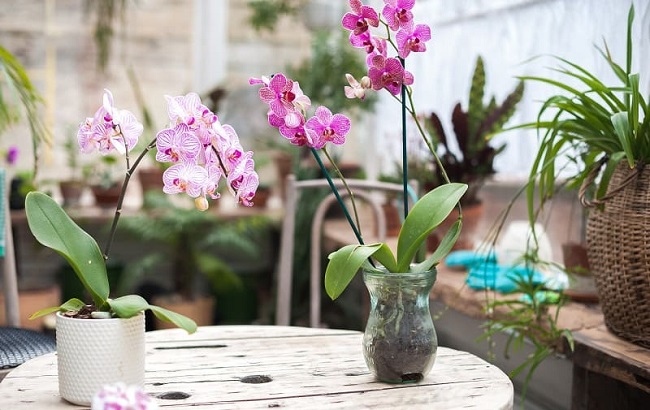
If you are looking to increase the number of orchids that you own, this article explains the three best orchid propagation methods for the home grower. Most growers can successfully use at least one of these methods, while the other orchid propagation methods are far more complicated and are normally done in a laboratory environment.
Division
Division is perhaps the most widely used method by home gardeners for orchid propagation. This is normally done during the re-potting season in the early spring just prior to the start of any new growth in the orchid plants.
All you must do is divide a grown plant into two or more plants, making sure that the roots are sufficient on each part. Then you plant each of the sections separately in different pots and usually they will have no trouble growing into a beautiful orchid all on their own. It is important to note that plants that are divided like this should only be divided if each division will have at least one new growth tip and at least three back bulbs.
Cuttings
As far as orchid propagation goes the cutting method is perhaps one of the simplest methods to use. The way that you accomplish this, however, is dependent upon your orchid type. With epiphytic orchids, you need to cut the plant at the stem beneath the roots since this type of orchid has aerial roots that are strewn across the stem. Use a small pot that is filled with growing medium and replant the cutting to where the roots are covered to stabilize the position of the cutting in the new pot.
The cutting procedure will vary depending upon whether the plant is ground-based or terrestrial. For example, terrestrial orchids will form what is known as a pseudo bulb that will be used to sprout new growth when they are ready. What you need to do is to cut one of the newly formed pseudo bulbs, keeping some of the healthy roots still attached. It should be replanted with the roots pointing down into a small pot, slowly packing the potting mix around the roots until they are covered, however keeping the pseudo bulbs above ground.
Seeds
A unique aspect of the orchid compared to other types of plants is that their seeds are so small, they are dust-like. You will need special equipment for doing orchid propagation with seeds, as the work is very precise and must be done in an environment that is completely sterilized. Professionals are really the only ones that can propagate in this way, as a laboratory is really required for this method.
If you want to expand and have a beautiful orchid garden, it is crucial that you learn the best method for orchid propagation for your types of orchids so that you get the best results.
While these are the 3 simplest and most used methods for orchid propagation, there are many other methods that can be used. It really isn’t very hard to learn how to do orchid propagation, all you need is to have good instructions, knowledge about orchids and you will be able to do it like a professional.
Related Articles & Free Email Newsletter Sign Up
10 Essentials for Growing Stunning Cymbidiums
How to Repot an Orchid in 7 Easy Steps
What Leaves Tell Us About Orchid Health




Comment here